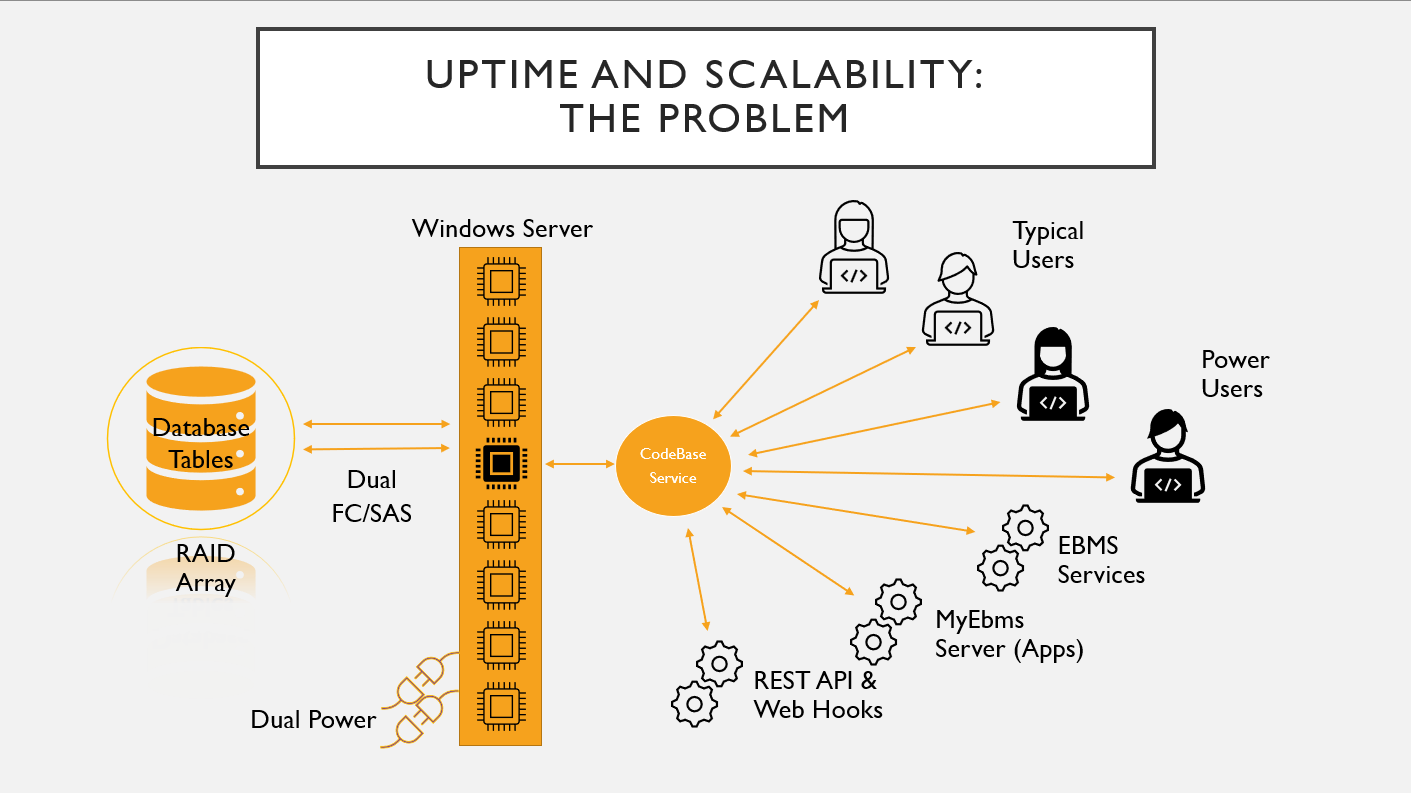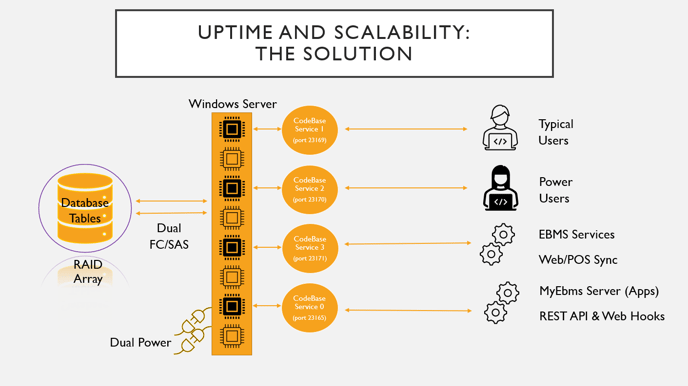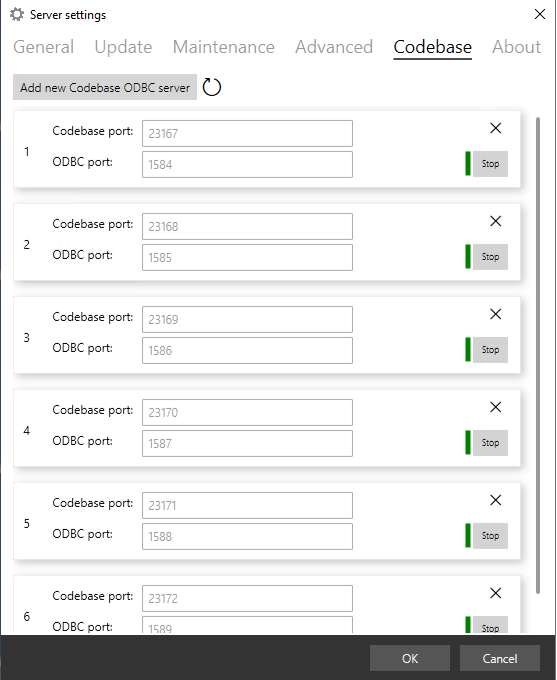- EBMS Knowledge Base
- EBMS Main Documentation
- Server Manager
-
Client Resources
-
EBMS Main Documentation
- Introduction
- Getting Started
- Getting Started | Initial Installation
- Getting Started | Company Setup
- Quick User Guide | Financial Staff | Accountant
- Quick User Guide | Financial Staff | Accountant | Accountants Journal
- Quick User Guide | Sales Staff
- Quick User Guide | General Staff
- Features
- Reports
- Security
- Server Manager
- Technical
- Technical | Data Import and Export Utility
- Technical | SQL Mirror
- Automotive
- Automotive | Parts Catalog
- Automotive | Pricing
- Automotive | Point of Sale
- Automotive | Product Application
- Automotive | Keystone Interface
- Metal Supply
- Fuel Sales
- Horticulture
- Horticulture | Farm Setup
- Horticulture | Processing Payroll
- Horticulture | Managing the Farm
-
Sales
- Introduction
- Customers
- Customers | Miscellaneous Customers
- Proposals
- Proposals | Processing Proposals
- Proposals | Sets and Templates
- MyProposals
- MyOrders
- Sales Orders
- Invoices
- Materials Lists
- Sales and Use Tax
- Sales and Use Tax | TaxJar
- CRM
- CRM | Auto Send
- Recurring Billing
- Credits
- Customer Payments
- Payment Card Processing
- Payment Card Processing | Gift Cards
- Payment Card Processing | Loyalty Cards
- Payment Card Processing | Verifone Gateway
- Freight and Shipping Tools
- General Ledger Transactions
- Point of Sale
- Point of Sale | Point of Sale Hardware
- Point of Sale | Xpress POS System
- Point of Sale | Advanced Tools
- Signature Capture
- Salesperson Commissions
-
Inventory
- Product Catalog
- Product Catalog | Using Product Codes for No Count Items
- Product Pricing
- Product Pricing | Special Pricing
- Tracking Counts
- Unit of Measure
- Purchasing
- Special Orders and Drop Shipped Items
- Receiving Product
- Barcodes
- MyInventory and Scanner
- Components (BOM) and Accessories
- Components (BOM) and Accessories | Component Formula Tool
- Made-to-Order Kitting
- Configure-to-Order Kitting
- Multiple Inventory Locations
- Multiple Inventory Locations | Creating Locations
- Multiple Inventory Locations | Using Multiple Locations
- Multiple Inventory Locations | Product Catalog Sync
- Multi-Vendor Catalog
- Serialized Items
- Serialized Items | Purchasing or Manufacturing an Item
- Serialized Items | Selling and/or Associating an item with a customer
- Lots
- Product Attributes
- Product Attributes | Selling and Purchasing Items with Attributes
- Product Attributes | Custom Attributes
- Mobile Scanner (Legacy)
-
Labor
- Getting Started
- Workers
- Taxes and Deductions
- Work Codes
- Time and Attendance
- Time and Attendance | Time Track App
- Processing Payroll
- Closing the Payroll Year
- Processing Payroll - Advanced
- Salaried Pay
- Piecework Pay
- Direct Deposit
- 3rd Party Payroll Service
- Subcontract Workers
- Flag Pay
- Prevailing Wages
- MyDispatch
- MyTasks
- MyTime
- MyTime | Communications
- MyTime | Setup
- Tasks
- Tasks | Getting Started
- Tasks | Creating Tasks
- Tasks | Scheduling Tasks
- Tasks | Customizing Task Views
- Tasks | Managing Tasks
-
Financials
- Introduction
- Fiscal Year
- Chart of Accounts
- Budget
- Financial Reporting
- Transactions and Journals
- Transactions and Journals | Journals
- Account Reconciliation
- 1099
- Departments and Profit Centers
- Fund Accounts
- Bank Accounts
- Bank Feed
- Vendors
- Vendors | Miscellaneous Vendors
- Purchase Orders
- Expense Invoices
- Vendor Payments
- AP Transactions
- Landed Cost
- Fixed Assets and Depreciation
- Fixed Assets and Depreciation | Fixed Assets
- Fixed Assets and Depreciation | Fixed Assets | Adding Assets
- Fixed Assets and Depreciation | Processing Depreciation
- Fixed Assets and Depreciation | Disposing Assets
- MyJobs
-
E-commerce
-
Rental
-
Job Costing
-
Manufacturing
Multiple Codebase Services
Codebase Service is the back-end database engine used by EBMS. The default deployment of the EBMS server components creates a single instance of Codebase on the server machine. This means that all connections to the database (desktop users, mobile users, background services) go through that single instance. That Codebase instance is then both a single point of failure and a potential performance bottleneck for overall EBMS availability and scalability.
The administrator may configure additional Codebase instances to improve availability and scalability, after which he can assign users and background services as he wishes among the pool of instances.
Some example configurations (not mutually exclusive):
- MyEBMS (REST API and Mobile) on a separate instance from Desktop users
- Each company is assigned to a separate instance
- Each department is assigned to a separate instance
- Power users are assigned to their own instance
- Remote XPressPOS and/or Website synchronization are assigned to their own instances
Why Use Multiple Services?
A single Codebase server creates the following problem:

Two or more Codebase services may be the solution to enhance performance or increase uptime. The fail-over switching of redundant services is useful to reduce down-time. Multiple Codebase services should keep EBMS from crashing.
 Multiple Codebase services should be used if there is heavy database traffic.
Multiple Codebase services should be used if there is heavy database traffic.


Creating Multiple Services
Multiple services should be configured by the network administrator or IT staff. Complete the following steps to configure additional Codebase services.
-
Launch EBMS Server Manager. Review the Server Manager Overview for more details on this tool.
-
Open the Settings page and click on the Codebase tab.

-
Click Add new Codebase ODBC server and enter a Codebase port number and ODBC port value as obtained from your network administrator.
-
Repeat for additional services.
EBMS does not enforce the administrator's assignment of users to Codebase instances. This allows a user to change to a different instance if needed and without having to contact the Administrator.
Review Getting Started > Initial Installation > Login Procedures to assign users to each Codebase service.
